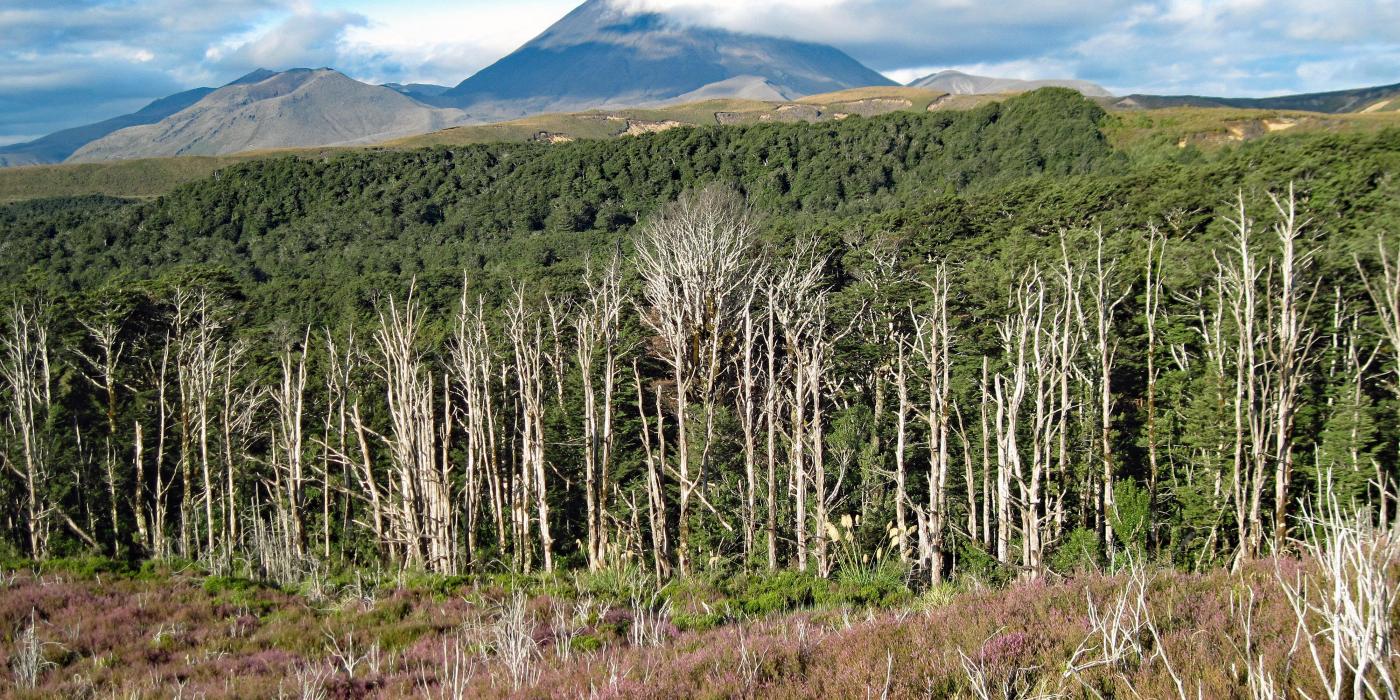Using Mathematical Models to Save Forests
How can small changes in the climate have big impacts on forest health? That’s what Smithsonian Conservation Ecology Center scientists Alan Tepley and Kristina Anderson-Teixeira are trying to figure out.
As forest fires increase in frequency, there is a growing urgency to understand how affected forests may or may not recover. In collaboration with partners from universities in the western U.S., South America and New Zealand, Smithsonian scientists have developed a mathematical model to help understand why certain landscapes are especially vulnerable to losing their forests and the species that rely on them, while others are more resilient. The study was published in the Journal of Ecology on March 27, 2018.
To help understand how forests are impacted by fires, researchers must ask questions like: Why do forests burn? How do they recover? What plants replace the burned vegetation after a fire, and how likely are they to burn again?
Forests sequester, or hold onto, carbon by absorbing carbon dioxide during photosynthesis. Some of this carbon dioxide then forms plant stems, branches, roots and leaves. As plants and trees burn during a forest fire, a large amount of the stored carbon is released as carbon dioxide. If forests quickly recover, they may rapidly re-accumulate carbon. However, if burning converts a forest to shrubland — and the shorter, shrub-dominated vegetation is maintained by repeated fires — the total carbon stored across the landscape may be substantially decreased. Because carbon dioxide is a heat-trapping gas, this process further aggravates climate change creating what scientists refer to as a positive feedback loop.
In landscapes where the vegetation that establishes after a fire is highly flammable, Anderson-Teixeira explains, “small increases in fire activity could result in sudden, dramatic and difficult to reverse losses of forests.” To make things worse, as the climate warms, it can become more challenging for trees to regenerate after fire.
By examining the type of vegetation that grows after a forest fire, scientists like Tepley and Anderson-Teixeira can determine the risk that a fire will strike again. Some types of vegetation, including shrubs and grasses, are very fire-prone and increase the chance of permanent forest loss. But not all forests are the same. Factors including vegetation type and rainfall impact how forests will burn and recover.
The scientists applied their model to forests across the globe, including those in North America, South America and New Zealand. They found forested landscapes burn and recover in very different ways, and some are more vulnerable to being permanently lost. As Tepley explains, “In certain boreal forest landscapes, the low flammability of species that quickly establish after fire, like aspen, provides a degree of resistance to forest loss as the climate warms and becomes more conducive to fire. However, in many southern beech forests of the southern hemisphere, fire can convert a cool, moist forest to a highly flammable shrubland that is easily perpetuated by repeated fires.”
Beech forests also have a slow rate of recovery after fire, which makes them particularly vulnerable to conversion from moist forest to flammable shrubland in response to relatively small increases in fire frequency. This is an example of what Anderson-Teixeira refers to as a “tipping point,” meaning they could more easily convert from forested to non-forested landscapes.
The team developed a quantitative model based on mathematic formulas that helps scientists identify which forests are closest to these tipping points, in the hope that these areas can be protected before it is too late. Their work is revealing insights that will help conserve vulnerable forests and protect the biodiversity of these unique environments.
The contributions by Tepley and Anderson-Teixeira were funded under the Klamath Mountains NSF grant. Learn more about the Klamath Mountains research project and the Wildfire PIRE project.



